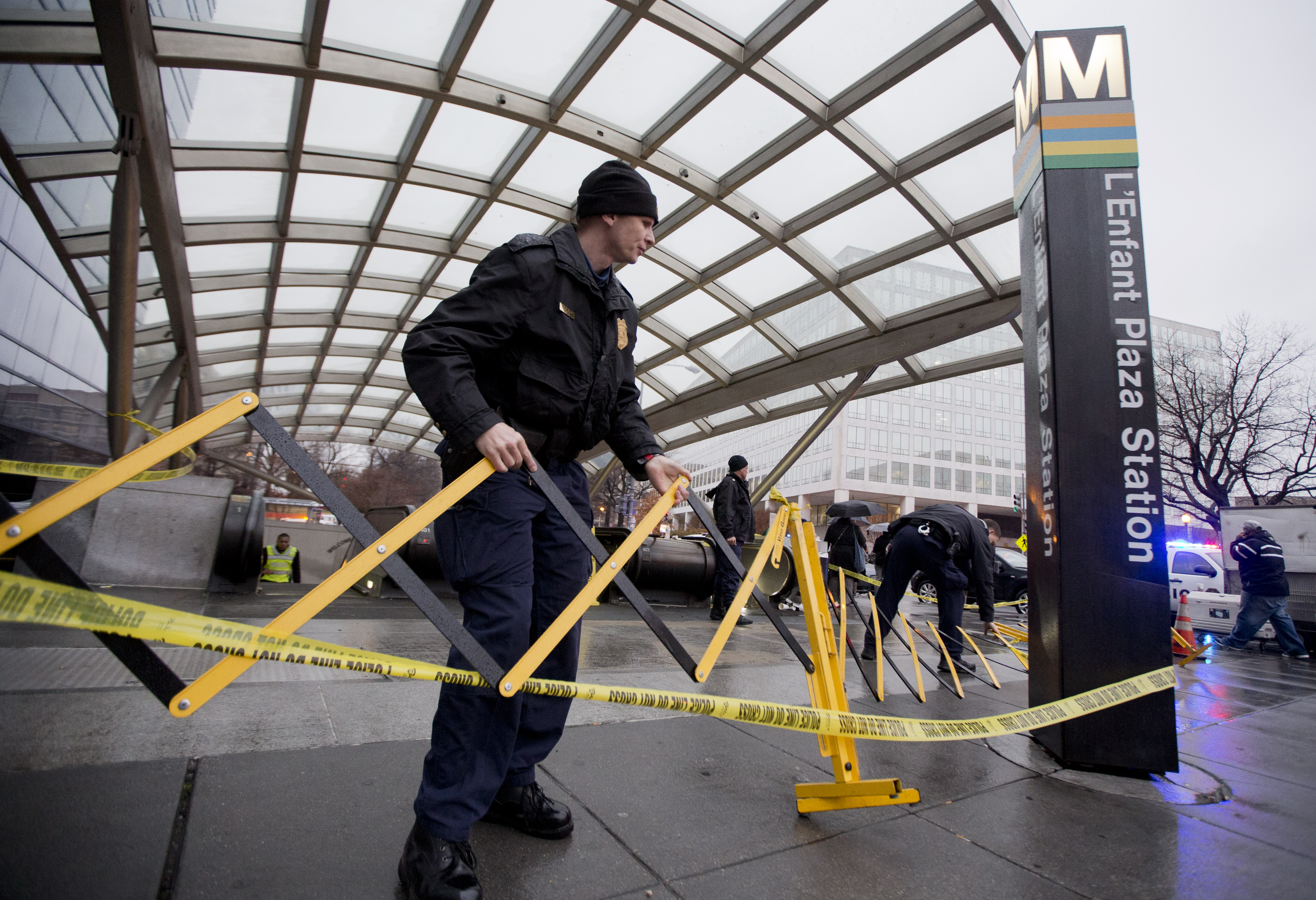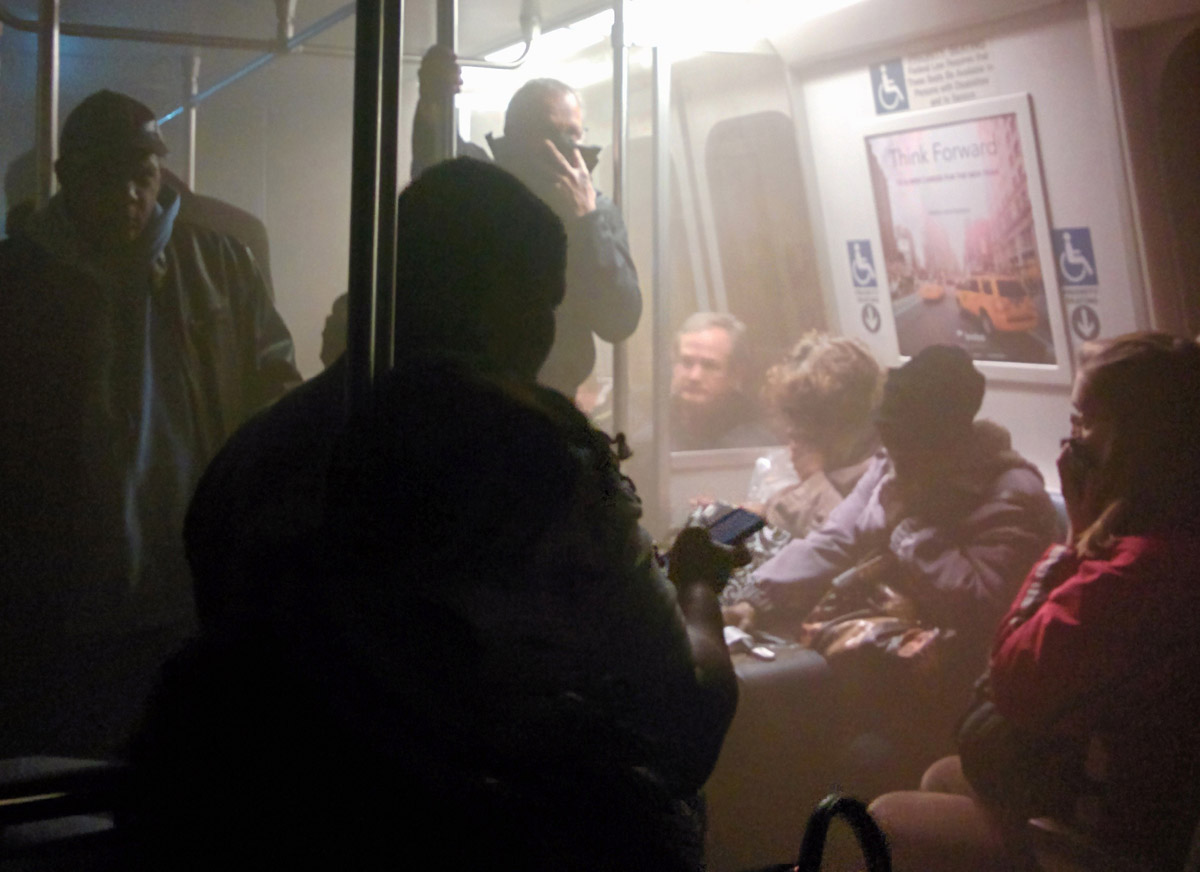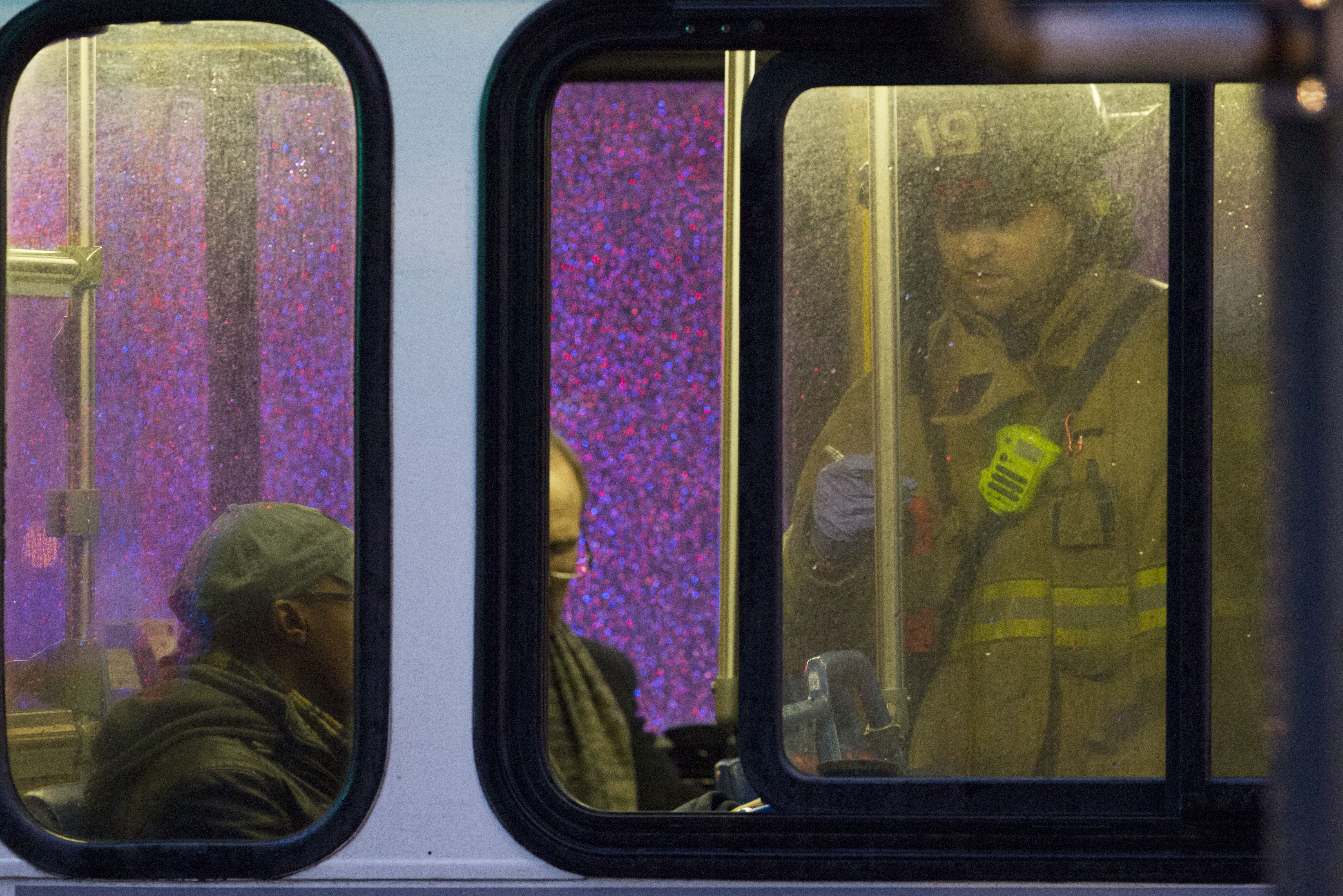WASHINGTON — The smoke incident at L’Enfant Plaza last January that killed a woman and sent dozens to the hospital was just the beginning of a year that saw an increase of injuries among passengers and workers on the system.
“2015 was challenging with a series of high profile incidents,” says the 2015 Annual Safety Report, which will be presented to the Metro Board of Directors on Thursday.
Metro riders saw slightly more injuries than the year before, and employee injuries per work-hour rose 27 percent over 2014.
Overall inside the rail system, slips, trips and falls accounted for 68 percent of rider injuries, followed by 21 percent tied to smoke. About one-third of rider injuries inside the rail system were tied to escalators.
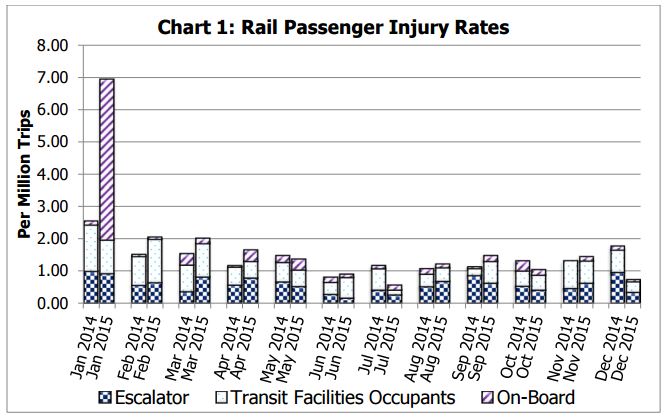
But after more than 60 people were injured in the smoke incident near L’Enfant Plaza, Metrorail rider injuries were up about 21 percent overall from the year before.
Two Metro Transit Police officers who responded to the L’Enfant Plaza incident have still not returned to the job, and the overall number of smoke and fire incidents reported in the Metro system rose sharply last year.
While most incidents classified as injuries dropped in 2015 from 2014, more riders faced smoke inhalation, as in the L’Enfant Plaza incident, and more were caught in train doors than the year before. The presentation that will be delivered alongside the report says overcrowded stations are a key reason more riders are getting stuck in doors.
On the positive side, the report cites lower injury rates for Metrobus riders, down 12 percent, and MetroAccess riders, down nearly 30 percent.
The presentation emphasizes that there’s been an overall drop in injuries since 2010 among employees and riders.
Metro says it is working to make more trains and cars available. However, General Manager Paul Wiedefeld has said he is not sure when Metro will be able to regularly have all of the railcars available that it needs for full rush-hour service.
The report states that Metro is making progress on more training for train operators to improve their response to customers who make calls to them over the emergency intercom in railcars. It also says increased training at night for bus operators and new video cameras in MetroAccess vehicles are helping to prevent customer injuries.
On the bus system, Metro says the key factor for 47 percent of rider injuries was “non-preventable” collisions — crashes in which Metro does not blame the bus driver.
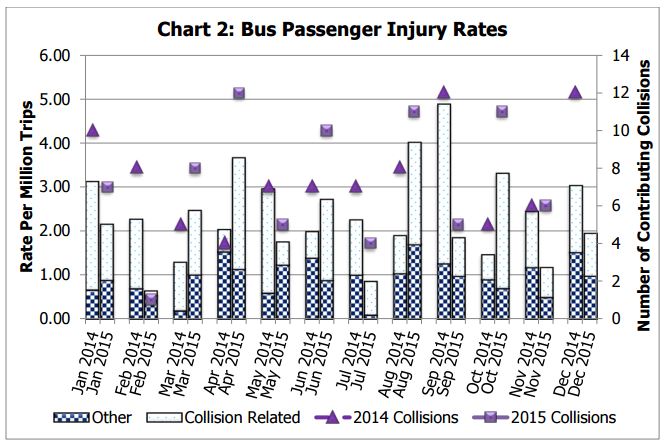
Thirteen percent of bus rider injuries were tied to falling while the bus was moving and 10 percent were tied to hard braking.
Metrobuses collided with 46 people walking or on bikes last year, with 22 of those people classified as injured. That is up slightly from the 40 collisions and 20 injuries in 2014.
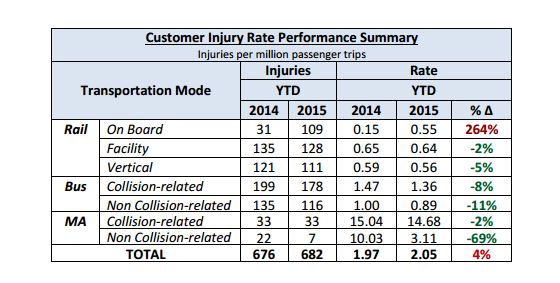
Twenty-two Metro employees were treated for injuries following the L’Enfant smoke incident, contributing to the overall increase in employee injuries last year. In addition, many more Metro employees are reporting stress-related injuries.
For Metro employees, such as bus and train operators and station managers, stress-related injuries rose a staggering 155 percent last year from 2014.
On the rail side, in the division that includes train operators, the number of Metro workers struck by or pinned against trains, and the number of workers reporting stress-related injuries, each doubled from 2014. Slips, trips and falls rose nearly 40 percent.
The report summary also says more station managers are reporting stress-related injuries after witnessing crime in the system or being assaulted themselves.
On the bus side, in the division that includes bus operators, stress, assault-related injuries and slips and falls were the leading causes of employee injuries.
Crime-related incidents rose 84 percent, with 46 more injuries. Over the last year, Metro has increased the use of plastic shields for bus operators to separate them from riders at the front door.
The number of reported stress-related injuries tripled over 2014, and the number of assaults on bus operators and related employees rose 73 percent. Overall, bus operators reported 260 injuries in 2015, compared to 71 injuries for train operators, 68 for Metro Transit Police officers and 43 for station managers.
In comparison to 2014, 25 percent more Transit Police officers were injured in 2015 during pursuits or arrests, and collision-related injuries for officers more than doubled. The report says that is “primarily due to non-preventable collisions.” In one collision, four officers were hurt.
The report says Metro only met its target of fewer than 4.6 injuries per 100 full-time workers in three months of 2015. And 132 more Metro workers suffered injuries that were reportable to the Occupational Safety and Health Administration in 2015 than in 2014.


